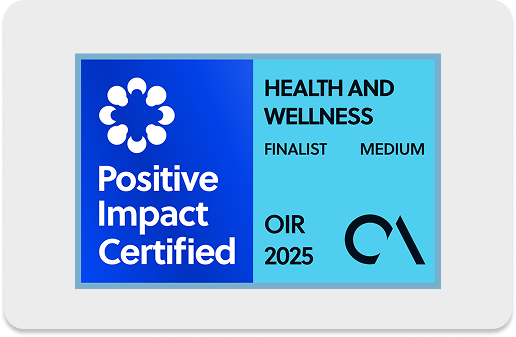There’s no doubt that all businesses should strive for great customer service. Support teams receive hundreds of calls daily, ensuring all customer service interactions go as smoothly as possible. Companies get only a few chances to prove themselves to customers.
But what else do we mean by customer service objectives? Indeed businesses have only one goal, which is to keep customers satisfied. However, customer service goals go beyond this understanding.
Instead, we must view customer service as multi-faceted. Each aspect of customer service has varying objectives from the other.
And a customer service team can have multiple objectives, depending on which customer service stage they’re on.
Simply put, customer service objectives for someone calling about a failed money transfer will be vastly different for a customer reaching out to avail of a service.
Whatever the situation, the business’s job is to provide excellent customer service in the interaction. Establishing the right objectives is key to achieving this. How exactly do you go about defining your customer service department objectives?
Table of Contents
1. Promote Your Brand
One of the objectives of customer service is to promote your brand by becoming a brand ambassador. Your support team, be it a salesperson or an entire call centre, are always on the frontlines. They’re talking to customers firsthand and ensuring customer satisfaction and loyalty are achieved.
As a soldier spearheading the frontlines of the battle, your agents must convince customers to stay loyal to your brand.
If you establish a solid customer base, your companies can find success in the end. Producing brand advocates is essentially free marketing, care of your customers.
Echoing Warren Buffet: “It takes 20 years to build a reputation and five minutes to ruin it” — customer service works pretty much the same.
It takes only 5 minutes to get it right with an irate customer before you put an irreversible stain on your reputation.
Each time your agents answer a call or send an email, think about how your brand will be affected and then springboard from there.
2. Establish Customer Loyalty
Retaining customers is much easier than gaining new ones. This is why businesses must strive not only for customer satisfaction but customer retention as well. And the easiest way to lose this loyalty is through poor customer service experience.
Whatever support channels your business may have — email, social media, phone calls, face-to-face conversations — the interaction is consistently associated with your brand. Therefore your agents must be there to serve the customers, even after-sales.
Customer loyalty can seem arbitrary, but there are many ways to measure it.
For something more straightforward, customer loyalty can be assessed by how frequently the customer purchases your product or subscribes to a service.
Other basic customer service KPIs (Key Performance Indicators) to consider are:
- Customer Acquisition Rate – Refers to the act of inviting new customers to your brand or convincing prospects to purchase your products/services. Customer acquisition brings customers from brand awareness to the marketing funnel and finally to the purchasing decision.
- Customer Retention Rate – Measures customer loyalty or a business’s ability to keep customers over a certain period. Customer retention predicts customer satisfaction, repurchasing behaviours, engagement, and brand awareness.
- Customer Wallet Share – The wallet share refers to how much a customer spends on your brand rather than other competing brands. Your business can grow its wallet share by researching and developing new products and services. These revenue-generating activities drive customers towards your brand and away from competitors.
3. Eliminate Sources Of Customer Dissatisfaction
A dissatisfied customer happens when your products and services fail to meet their expectations.
As a business, you must be keen on customer dissatisfaction because it can negatively impact your business, create a poor reputation, and reduce customer loyalty.
Avoiding customer dissatisfaction is much easier than actively striving toward customer satisfaction.
If the objective is to eliminate potential sources of dissatisfaction, you must identify them first. Only then can you build a relationship with the customer and understand their experiences with your products and services.
There are multiple ways to go about this, but gathering customer feedback is a tried and tested method. For instance, you can use surveys and other materials to determine what features your customers want from your app.
Or, you could also have an option whereby customers could reach out to your business for suggestions and improvements, not just a funnel for customer complaints.
4. Offer Instantaneous Solutions
We can credit the Industrial Revolution for bringing modern innovations we’re still using today. However, we can also blame it for the decline in customers’ attention spans.
A study conducted in the early 2000s found an individual’s average attention span declined from 12 seconds to eight seconds.
What does this mean for your business? Simply put, you only have 8 seconds to deliver good customer service and build good customer relationships.
You have to understand that customers want fast and instantaneous solutions. Therefore, addressing issues immediately and efficiently should be one of the top customer service goals of your organizations. Conduct a poll amongst your customer support team.
Do you notice a trend? Do most customers expect their problem to be resolved within the day? How do they react when an agent tells them to wait a few days before their issue is fixed?
Your business must continually address customer issues as soon as they arise. For example, a customer complains about an obsolete phone plan that your business no longer supports.
Instead of saying there’s nothing your support team can do about the problem, encourage them to recommend an alternative service. Highlight its features and explain why it’s more beneficial to subscribe to this service.
Then, examine your agents’ resolution times. The resolution time is another metric to consider and can be calculated with the following equation:
Resolution Time = Total Number of Hours/Minutes For All Tickets/Number of Tickets Resolved
5. Increase Customer Retention Rate
The best time to improve customer retention is when a customer calls to complain about a problem.
If your support team can end the interaction on a good note with the customer singing praises about your agents, then the customers are more likely to stick with your brand.
Happy customers lead to increased customer retention. They can also do your marketing for you at no extra cost.
How? When customers’ pain points are addressed, they may be willing to spread your brand’s good deeds. They may talk to their friends and do word-of-mouth marketing that can only be possible through great customer service.
Improving customer retention starts with building good customer relationships. Encourage your agents to adopt a friendly and responsive approach when talking to customers.
They must continually put themselves in customers’ shoes and offer perks or special initiatives occasionally.
You could also improve customer service by adding self-help options. Self-service not only involves the customer but also frees up more time for your customer service teams to handle critical tickets.
6. Get Good Reviews
Contrary to popular belief, customer feedback is all in your hands. You may think you’re powerless when it comes to customer reviews, but nothing could be further from the truth.
Remember that each customer service interaction is an opportunity for good ratings and reviews. Naturally, good customer service leads to better customer feedback.
One way to improve your customer rating is through an NPS or Net Promoter Score. For example, after closing a successful email ticket, your support agents must ask the customer to rate the interaction on a scale of 1 to 10.
The responses can fall into either one of three categories:
- 9-10: Promoters
- 7-8: Passives
- 1-6: Detractors
7. Boost Productivity
As much as your business wants to meet customer service objectives, none of it would be possible if your agents don’t have the tools for the job.
This is why you must always invest in new technologies and software which can help improve your team’s productivity.
Ultimately, customer service efficiency will only be possible if your support team is empowered to do their roles and responsibilities. Here are some strategies to get you started:
- Invest in continual training and development
- Gather employee feedback
- Understand your Customer Relationship Management (CRM) software
- Automate, automate, automate!
Investing in your customer service representatives makes their work easy, allowing them to respond to more tickets, fix more issues, and ultimately boost their overall productivity.
8. Build Customer Lifetime Value
Customer lifetime value refers to a customer’s total worth to a business over the entire relationship period. This is another important KPI in meeting customer service objectives.
Again, retaining customers is far less expensive than getting new ones. Boosting the value of your existing customers is effective at driving growth.
You’ll need to collect data on customer feedback, email, online chats, phone calls, and other support channels by which customers interact with your brand and offer feedback.
9. Gather Valuable Feedback
Last but not least is gathering valuable customer feedback. Many customer service objectives on this list can be achieved simply by asking the customer.
Feedback is essential for improving customer service and increasing the value of your products/services.
Aside from conducting NPS surveys, you could follow up with customers through:
- Questionnaires
- Polls
- Emails
- Phone conversations
- Social media
Remember, your customers don’t have a hive mind. Each of them prefers different channels when providing customer feedback. So it’s always best to offer multiple options, be it through a star rating system or leaving a review on your business Facebook page.
What Does Customer Service Hope To Achieve?
What exactly is the objective of customer service? Though it remains multi-faceted, all businesses can agree that customer service should be instrumental in keeping customers happy and raking in sales for the company.
The idea may seem straightforward, but that’s just half the battle won. Executing these objectives rests on delivering promises, solving customer issues, and retaining customers.
Often, customer satisfaction is achieved by putting yourself in your customer’s shoes. Would you be satisfied with talking to a bot? Is this the kind of service you want?
If the answer to these questions is “no”, you need to think longer and harder about your customers’ expectations.
Conclusion About Customer Service Objectives
There’s no umbrella strategy for achieving all your customer service objectives. It’s multi-faceted and involves countless hours of experimentation, not to mention you must also consider your customer service models.
Not all methods will work. It’s up to your business to strategize and try different techniques to achieve your desired outcome.
Ready to take your customer service to the next level? Gear ‘s business process outsourcing services can get it done. Our range of solutions — live chat, data entry, email support, and more — can help you achieve business goals and objectives.
Get in touch with us now and see the outsourcing difference! Whether project-based or full-time operations, our customer service team is well-equipped to meet your business needs.
Frequently Asked Questions About Customer Service Objectives
How Do Customer Service Objectives Contribute To Good Customer Service?
They provide a clear framework for the customer service team to follow, ensuring that all interactions are efficient and effective. By setting specific targets, such as reducing response times or improving customer satisfaction, companies can maintain a high standard of good customer service.
What Are The Benefits Of Setting Customer Service Objectives For A Customer Service Team?
Setting customer service objectives helps the customer service team stay focused and aligned with the company’s overall goals. It provides measurable benchmarks for success, enhances team performance, and ultimately leads to improved customer satisfaction by delivering consistent and reliable service.
Can Customer Service Objectives Evolve Over Time?
Yes, customer service objectives should evolve over time to meet the changing needs of customers and the business. Customer service professionals can adapt to new challenges and improve customer satisfaction by regularly reviewing and updating these objectives.
How Can Customer Service Professionals Ensure They Meet Customer Service Objectives?
Customer service professionals can ensure they meet customer service objectives by staying well-informed about the company’s products and services, actively listening to customers, and efficiently resolving their issues.
Gear Inc.















